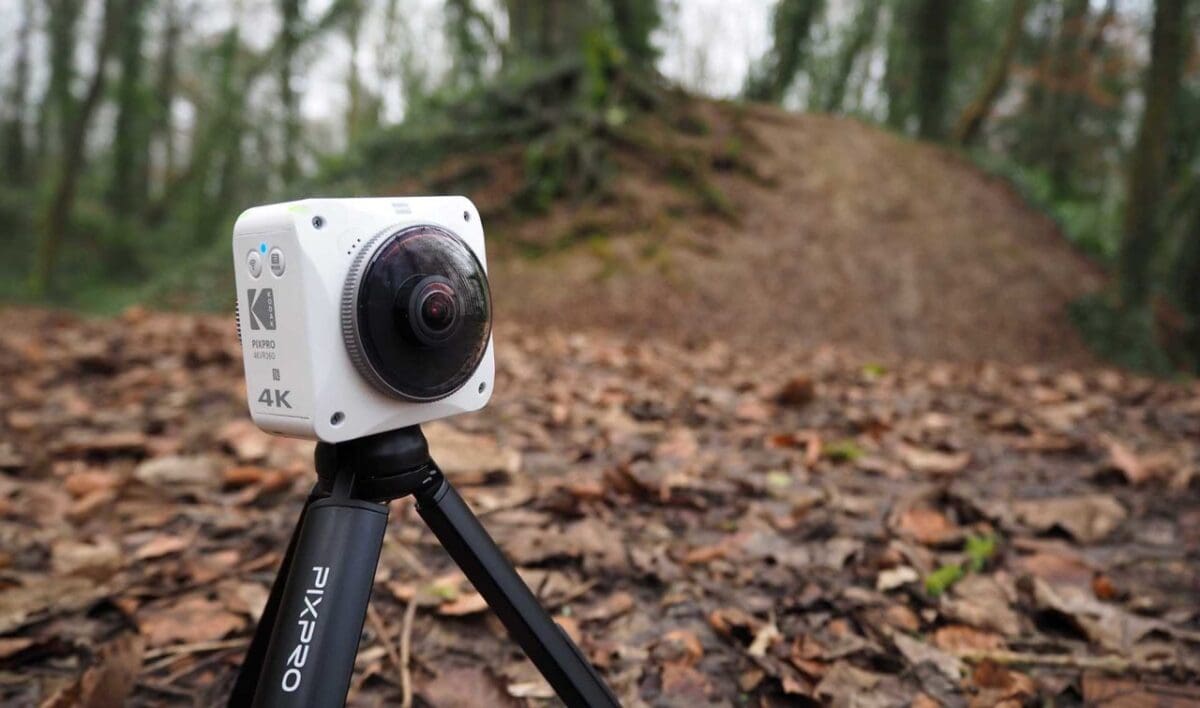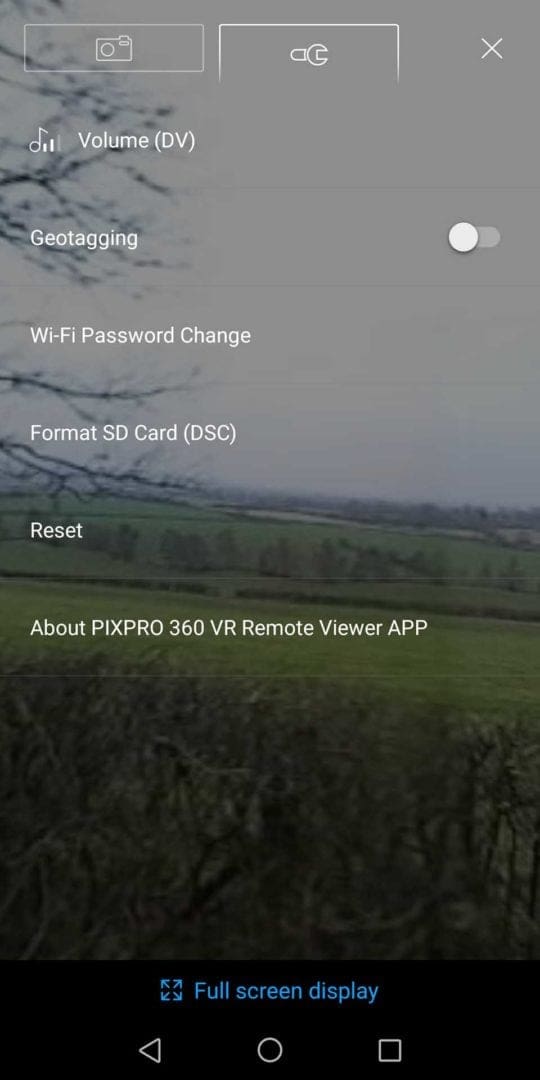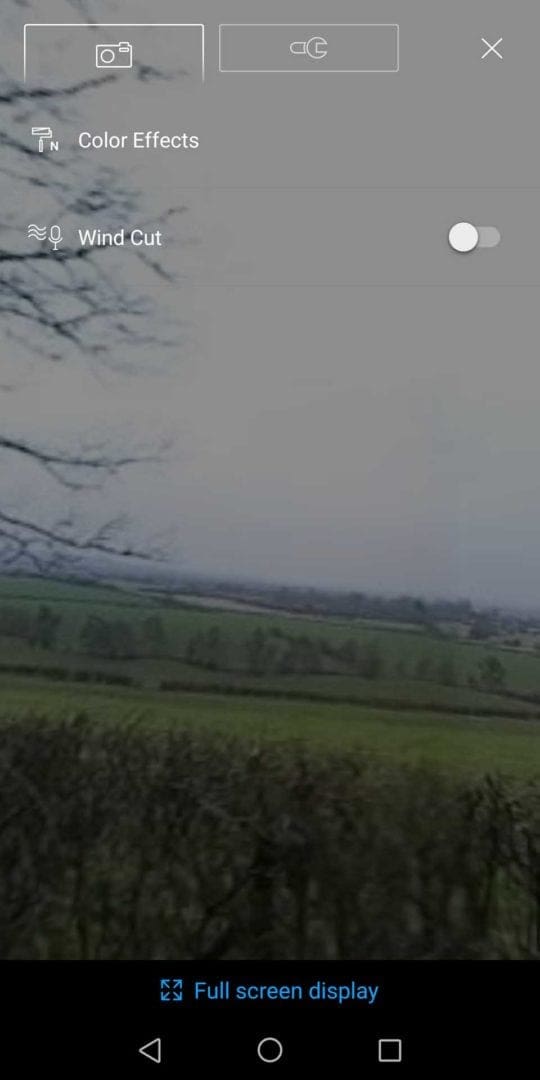What is the Kodak PixPro 4KVR360 / Orbit360 4K?
The Kodak PixPro 4KVR360 – also called the PixPro Orbit360 4K – is the second PixPro 360 camera in Kodak’s stable and is one of the more interesting new 360 cameras on the market.
While it doesn’t grab headlines with its 4K video and somewhat pedestrian 24fps and 15fps frame rates, and though it lacks standout features like GoPro’s OverCapture, the PixPro 4KVR360 / Orbit360 4K does boast a nice design, plenty of controls and accessory ports, along with 235-degree and 197-degree dual lenses.
Kodak PixPro 4KVR360 / Orbit360 4K Specs
- Price: £399.99
- Dual 20MP CMOS Sensors
- Three Multi-View Angles:
– 360° Spherical / VR Mode
– 197° 4K Ultra Wide Mode
– 235° Dome Mode - Facebook and YouTube 360° Photos & Videos
- Supports Micro SD Card Up to 256GB (Class 10 or Higher Required)
[table id=52 /]
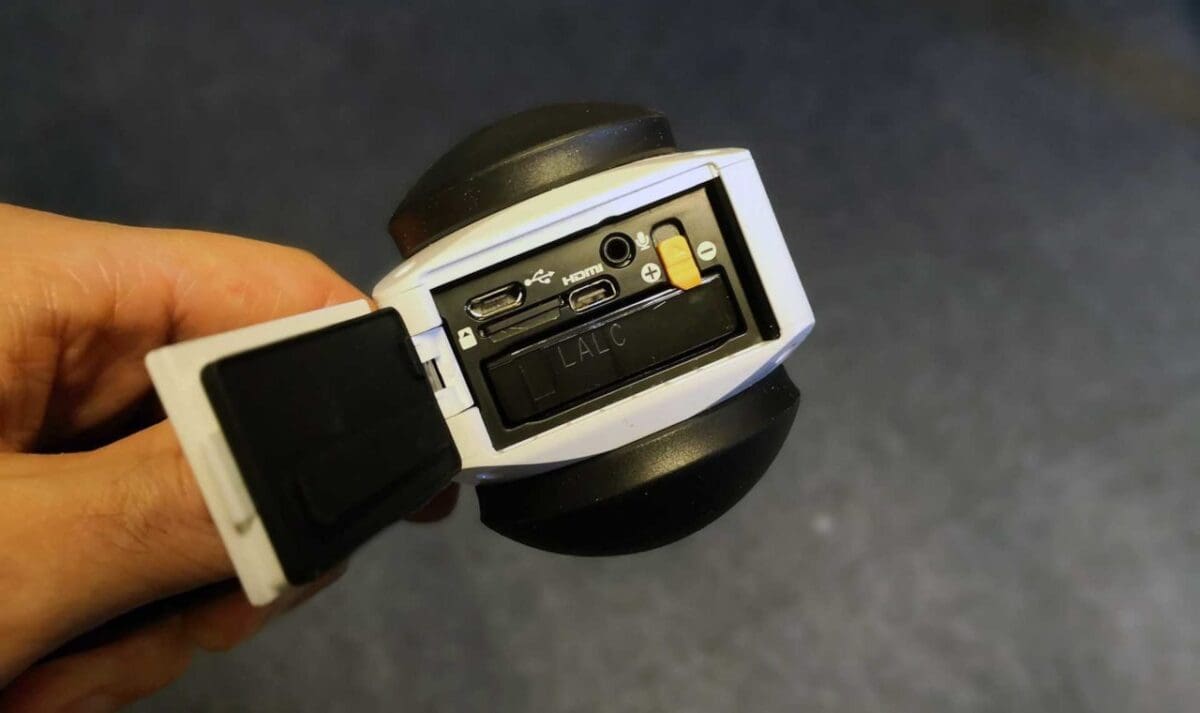
Build & Handling
If you thought the Kodak PixPro 4KVR360 / Orbit360 4K looked eerily reminiscent of the Nikon KeyMission 360, you wouldn’t be wrong. Like the KeyMission, the PixPro 4KVR360 / Orbit360 4K takes a box-like shape with large dual lenses on either side, the front one slightly smaller than the other.
This is perhaps the most interesting feature about the PixPro 4KVR360 / Orbit360 4K. Most 360 cameras have dual lenses (or sometimes four or eight) all of equal size and focal length. But the PixPro 4KVR360 / Orbit360 4K boasts a front lens with a 197-degree field of view, and a 235-degree ‘Dome’ lens on the back.
So why the asymmetry? As well as spherical footage, the Kodak PixPro 4KVR360 / Orbit360 4K lets you shoot single lens footage for varying effects. From the front lens you can capture ultra-wide-angle views, while the back lens enables you to shoot in a dome mode – effectively a tiny planet effect.
Because of this, the Kodak PixPro 4KVR360 / Orbit360 4K really is more than just a 360 camera. It’s a proper hybrid 360-action camera, and it’s something I’m a little surprised GoPro and Garmin and YI haven’t done.
On top of the PixPro 4KVR360 / Orbit360 4K is the power button, a one-touch record button and a small LCD that displays your camera settings. On one side is a robust compartment door with a lock. Opening this you find the PixPro’s battery, a micro USB charging port, a micro HDMI port, a microSD card slot (class 10 or higher, up to 256GB) and a microphone input.
Really, I was quite impressed at the options Kodak provides here. This is more than most 360 camera manufacturers will offer on a camera at this price point.
On the other side of the PixPro 4KVR360 / Orbit360 4K is the WiFi button, allowing you to connect the Kodak camera to your smartphone for remote use. And there is also a Mode button, which allows you to cycle through the PixPro 4KVR360 / Orbit360 4K’s various shooting modes.
There’s a real nice range of controls on the Kodak PixPro 4KVR360 / Orbit360 4K, and you can tell that the body design has been well thought through. I was able to connect quickly to the app using the WiFI button. And that one-touch recording button was handy for those few days when I was in-between phones!
The PixPro 4KVR360 / Orbit360 4K’s body is plastic, but it’s solidly put together. It has some weight to it, but not too much, and when you hold it in your hand you just get that feeling it’s going to last.
And there are a lot of nice design touches as well. For instance, the Kodak PixPro 4KVR360 / Orbit360 4K comes bundled with bespoke plastic lens caps that fit snugly over the camera’s bulbous lenses. This is something I’ve often thought would be really nice to have on a 360 camera.
Most of the time I toss my 360 camera in a bag or pocket because they’re so portable that way. But I’m always conscious of how exposed those lenses are, particularly when a camera has glass lenses (the Kodak’s are glass covered by plastic domes). With the Kodak PixPro 4KVR360 / Orbit360 4K I had none of that lens anxiety!
Kodak also provides a handy selfie stick that doubles as a tripod. It’s made of metal with rubber feet, making it pretty versatile for setting up the PixPro 4KVR360 / Orbit360 4K in mud, streams and other such environments. And because the PixPro 4KVR360 / Orbit360 4K is splash- and dust- and shock- and freeze-proof, I wasn’t too worried about setting it up in these conditions.
Also bundled with the camera is a carrying case and, quite usefully, a remote control. Again, when I was between phones recently and couldn’t shoot via the app it was really handy to have this remote control. Short of voice activation like the GoPro Fusion and Garmin VIRB 360, the remote control allows you to capture images and video where you’re not looming over the camera.
Performance
The Kodak PixPro 4KVR360 / Orbit360 4K powers on quickly, and you can immediately start taking photos if you’re using the remote control that comes with the camera.
There are a host of shooting modes at your disposal, which I’ve described above, and you can have a lot of fun experimenting with things like Dome Effects. Kodak has really tried to provide something for everyone here, and to this end they’ve succeeded.
Battery life is about an hour per single charge, which is about the same as I’ve experienced with other 360 cameras like the GoPro Fusion, Garmin VIRB 360 and Ricoh Theta V.
Image quality from the Kodak PixPro 4KVR360 / Orbit360 4K is pretty average overall. The colours are natural, if a little flat, and there’s not much detail, for instance, in an overcast sky. Shooting with the GoPro Fusion, for instance, I was impressed by its ability to pick up tonal differences in England’s notorious overcast skies, but the Kodak PixPro 4KVR360 / Orbit360 4K mostly renders them white.
The PixPro 4KVR360 / Orbit360 4K also struggles a bit with high-contrast scenes. But many 360 cameras do. And in good light, the PixPro 4KVR360 / Orbit360 4K picks up nice detail.
The video below is a good example of this. At ground level you can see some nice detail in the water and rocks, but as you swipe up skyward the treetops are beset by fringing and smudging of detail.
Stitching, however, was the most problematic area. As you can see in the sample video below, when you swipe around to the right I’m positioned right in the dead zone of the camera and my face gets sliced in half.
It’s a common problem in 360 cameras, and nothing unique to the Kodak PixPro 4KVR360 / Orbit360 4K. I found the same issue with the Detu Twin Camera and others. But it’s something to be aware of.
If you want to use the Kodak PixPro 4KVR360 / Orbit360 4K to shoot landscapes and city scenes in 360, you probably aren’t going to notice the stitch so much. But if shooting nearby subjects it can be a little more obvious.

Garmin has an option on its VIRB 360 camera to change the stitching distance from Near to Far depending on your subject or location.
It was very handy, and something like that would be a nice addition to the next version of the PixPro 4KVR360 / Orbit360 4K.
Using the app
Kodak has done a superb job with the camera’s app. So often a poorly designed app can let down a perfectly good 360 camera, but Kodak has given its app all the features that 360 photographers will want.
Crucially is live preview so that you can check your scenes on your phone and tweak compositions if necessary.
You’ll also find access to a number of exposure controls, as well as adjustments for settings such as video frame rate.
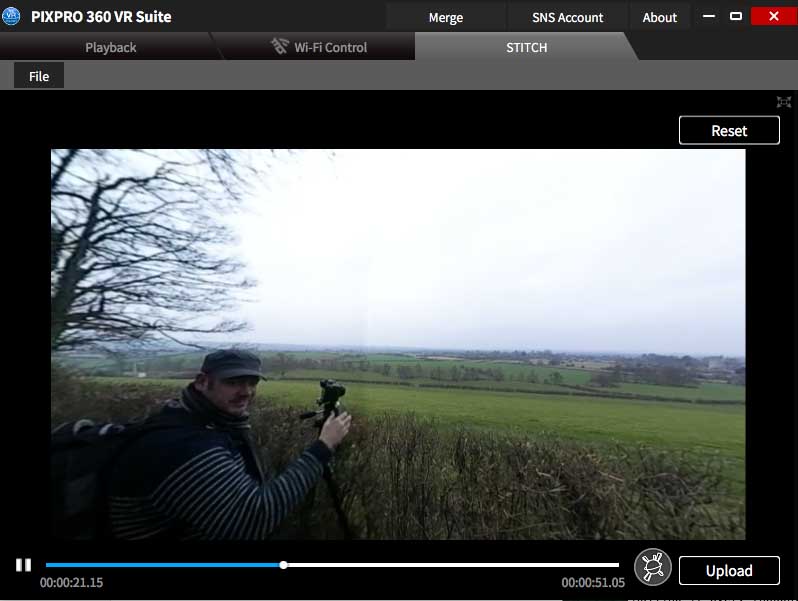
Using the PixPro 360 VR software
To stitch your 360 images and spherical video you need to download Kodak’s free PixPro 360 VR Suite software. Installation is quick and easy, and despite a somewhat early 2000s look to the software’s interface, it’s also pretty simple to use.
Most, if not everything, you do will be in the Stitch tab at the top. Here you can import two files at a time and stitch and render to share on Facebook or YouTube.
Once your file has imported you press the Export button. You’re then prompted to sign into your Facebook or YouTube account (you only have to do this once) and your files will then upload automatically to these platforms.
It’s all very easy, but it would be nice to see the software updated with a few more controls, such as being able to change the POV or adding filters and adjusting tones like GoPro’s Fusion Studio software, or add stabilisation effects as you can with Garmin’s VIRB Edit software.
Verdict
The Kodak PixPro 4KVR360 / Orbit360 4K offers a lot of nice features and is very user-friendly with a hybrid action camera design that offers a lot of versatility. If you’re looking to make the leap into 360 imaging, the PixPro 4KVR360 / Orbit360 4K is priced well and is a solid performer, if not the best. It does a lot of things well, but none of them spectacularly.
The main thing letting it down is a sometimes poor stitch that is noticeable in your spherical content.
Should I buy the Kodak PixPro 4KVR360 / Orbit360 4K?
At its £399 price point the Kodak PixPro 4KVR360 / Orbit360 4K is the same cost as the Ricoh Theta V, but in my opinion the Theta V offers a little better image quality. Then again, the Theta V lacks a number of the PixPro 4KVR360 / Orbit360 4K’s extra functions and build quality.
Personally, the camera on its own feels maybe £50-£100 too expensive. But given all the accessories Kodak provides in the bundle, and how much these expand your capabilities, it probably is priced about right.
If you’re new to 360 imaging and don’t want to spend the extra £300 on a GoPro Fusion or Garmin VIRB 360, then the Kodak Kodak PixPro 4KVR360 / Orbit360 4K is a pretty good option.
